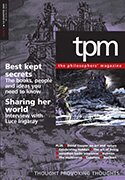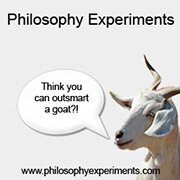The Peacock and the Buffalo: The Poetry of Nietzsche, translated by James Luchte (Continuum) £20/$29.95 (hb)
 If you’ve read Thus Spoke Zarathustra or some of Nietzsche’s more aphoristic works, you’ve probably noticed that he had a particular fondness for poetic formulations and lyrical prose. What you might not know, however, is that Nietzsche wrote almost three hundred poems and aphorisms, which are collected here in their entirety for the first time in German and English (and nicely laid out on opposite pages, so you can check the translation if you are willing – or able). From the tender age of fourteen until just before his mental collapse in 1889, Nietzsche wrote poems about, well, rather Nietzschean things: paths, God, animals, sickness, classical themes, mountains, with a bit of misogyny thrown in for good measure (“Lovelier is a woman,/More interesting – is the man!”). While the poems may not be altogether surprising in either their style or content to those familiar with his oeuvre, this collection adds an intriguing dimension, a rather attractive companion-guide if you like, to Nietzsche’s better-known writings on aesthetics and language. (Perhaps the less said about Nietzsche’s attempts to compose music, however, the better. Even Nietzsche’s friend, Hans von Bülow, described his works as an “aberration in the realm of composition”).
If you’ve read Thus Spoke Zarathustra or some of Nietzsche’s more aphoristic works, you’ve probably noticed that he had a particular fondness for poetic formulations and lyrical prose. What you might not know, however, is that Nietzsche wrote almost three hundred poems and aphorisms, which are collected here in their entirety for the first time in German and English (and nicely laid out on opposite pages, so you can check the translation if you are willing – or able). From the tender age of fourteen until just before his mental collapse in 1889, Nietzsche wrote poems about, well, rather Nietzschean things: paths, God, animals, sickness, classical themes, mountains, with a bit of misogyny thrown in for good measure (“Lovelier is a woman,/More interesting – is the man!”). While the poems may not be altogether surprising in either their style or content to those familiar with his oeuvre, this collection adds an intriguing dimension, a rather attractive companion-guide if you like, to Nietzsche’s better-known writings on aesthetics and language. (Perhaps the less said about Nietzsche’s attempts to compose music, however, the better. Even Nietzsche’s friend, Hans von Bülow, described his works as an “aberration in the realm of composition”).
Nietzsche begins, as many young poets do, with himself, albeit a rather glorified notion of selfhood: “I stand naked on a cliff/And the fabric of night clothes me/I gaze down from this naked height/Upon blooming meadows./I see an eagle float/And with youthful zest/Strive into golden streams/rising in the eternal glow” (“I stand naked on a cliff”). Nietzsche’s favourite animal, and the one that recurs most in these poems is the eagle – which reminds us of the birds of prey who feel little compunction in eating the delicious lambs in his later On the Genealogy of Morality (1887). Even in the early works, there are nevertheless moments of precocious philosophical thinking on display here and there: “How lovely to embrace/the world in universal pressure./And then to write a/New note about the universe” (“The sweet dreams flee”).
The poems that follow his youth, described here as “Lyrics” (1869 – 1888), take on a darker tone, with vultures, melancholy, heartbreak and loneliness replacing the happier birds and mountains of his youthful efforts. Zarathustra emerges as a key figure here and Nietzsche begins to reference other poets (the Persian writer Hafiz, for example) and to draw upon his substantial philosophical and classical knowledge.
One is drawn, inexorably, to look for poetic incantations of his better known philosophical claims; thus lines such as “I wax high over humans and animals; And I speak – no one speaks with me.” (“Pine and lightning”) conjure up visions of the over-man, or at least Nietzsche’s more lofty proclamations to speak for “everyone and no one”. At the same time, a kind of distaste for introverted, isolated work emerges (and we should remember that Nietzsche wrote many of his thoughts down while out wandering in forests), and so in “The joyful wisdom” we have this dismissal: “This is not a book: what matters books!” and the warning that “Who cannot laugh here, shall not read here!” (“Attention: Posion!”). While not all of Nietzsche’s poems reach the degree of lightness and play he celebrates here, they are certainly more compelling than one might have supposed (and to put it in a somewhat Nietzsche-like idiom, who today has the patience to truly read poetry?). A particularly successful short piece on this theme reads as follows: “I write not with my hand alone: The foot shall be my pen./Festive free and brave it runs,/Sometimes through the field, sometimes through the paper.” (“To write with one’s feet”).
The poet’s relation to truth is one of the most striking themes here, particularly given Nietzsche’s lifelong interest in the constructed nature of verity: “The poet, who can/willingly and knowingly lie,/can alone tell the truth” (“Through the Circle of Dionysos Dithyrambs”). Nietzsche’s poetic “truth”, much like his philosophical one, is a complex beast, part-eagle, part-vulture, and infinitely suspicious. Best perhaps to question instead the motivations of the one who seeks after truth, whether it be poet or philosopher: “Healthy is he who forgets” (“Dialogue”). Elsewhere there is scanty and amusing dismissal of the preoccupations of philosophy: “Reason! Annoying business!” (“In the south”). While it is unliterary to imagine that all the poems are direct, albeit lyrical, expressions of Nietzsche’s philosophy, there is something oddly reassuring about coming across the same themes here that appear in the major works.
Luchte, in one of his two prefaces (the earlier is from a non-complete edition of the poems), describes Nietzsche as ultimately a “poet-philosopher” and suggests that “Nietzsche’s practise of writing and composition in itself challenges our strict classifications of poetry, aphorism and prose”. This precise claim is a fitting tribute to Nietzsche’s complex urge to write – and this collection should make us turn once more to Nietzsche’s major works with his poetry ringing in our ears.
Nina Power is a Senior Lecturer in Philosophy at Roehampton University
Subscribe to the magazine to read reviews as they’re published
 Email This Post
Email This Post 



Discussion
No comments for “Review: The Peacock and the Buffalo”